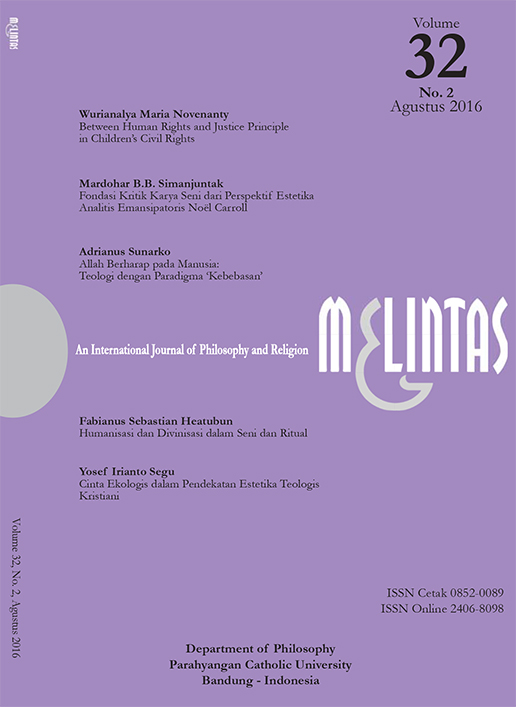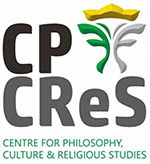Vol. 32 No. 2 (2016)

Art does not choose. Humans do. When the freedom to be is conversed, we know that some balances in our thoughts and images are shaken. As art fills the gaps of our life graciously, being anything should not be a problem for anyone living in this same earth. Art relates humans in ways that our rational judgment cannot fully clarify or justify, for relationship might be our only chance to preserve our humanity. That is why, when isolating instead of relating, every artistic work would fall into a nonbeing. We need not judge any existence. We simply respect creatures and things we do not choose to live with. Perhaps nature chooses?
If only choosing is not something we ‘have to’ do, being related could be a good alternative for our way of being. This edition of Melintas provokes our imagination in human rights, aesthetics, theology, and ecology. The first article observes some problems in Indonesia concerning children’s civil rights, and particularly in relation to legitimate and illegitimate children. The author will discuss children’s civil rights based on civil law, human rights, and justice principle in Indonesia. The second article explores Noël Carroll’s emancipatory analytical aesthetics to approach the works of art epistemologically. It offers Caroll’s revision on Kantian aesthetic experience and Levinsonian historical definition of art towards a “historical narrative” of artwork and its criticism. The third article sees how a way of theologising by way of a ‘freedom’ paradigm can conform the requirement of reason to borderlessly question the fundamental cause of everything. ‘Freedom’ paradigm brings the potential to be the reference in understanding and formulating Christian fundamental doctrines on many themes. The fourth article looks at how ritual and art are inseparable, and that both are the hermeneutical site of meanings and values that simultaneously become the same place to find answers and to restore humanity. Ritual and art are considered central through the processes of humanisation and divinisation. The fifth article explores Christian ecological love as a crucial response to the escalating problems of human-nature relationship, from the aesthetic-theological approach. The author sees love as the self’s involvement to participate in the life of the other, that is, through the real and constructive encounters of human and nature that preserve the beautiful existence of both.
We do not choose our being human nor judge other’s being in the world, but we all are related aesthetically and naturally. Conversing about our being related to any other might bring about the awareness of being chosen as a human being. And in this knowledge, we will not be judged by those related to us, except let live in the freedom.
Editor.

